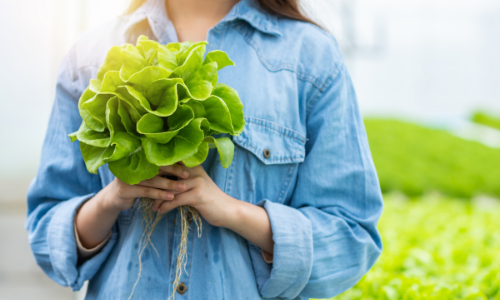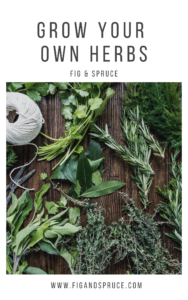Hydroponics is a smart farming technology that involves the growing of plants without soil. These plants are grown in an inert media where inert means that apart from supporting the roots the medium does not contribute in any way to the plant growth. Moreover, the plants are still supplied with nutrients they need to grow to the best quality through mineral-rich water. Some of the commonly used inert media in hydroponic farming include granite, rock wool, perlite, coconut fiber, expanded clay pebbles, and in some cases.
Hydroponics systems can be done at a very large scale or a small at home system. For those just starting out with hydroponics, AeroGarden can be a good option for those trying to do hydroponic gardening in a small space. . However, while hydroponic farming can be done both outdoors and indoors, AeroGarden units are strictly designed for indoor use. We’ll cover more about that later in the article though. For now, let us find out some of the best plants for hydroponics.
Hydroponic farming technology is not necessarily suited for all kinds of crops. Its purpose is to supplement traditional farming which brings us to the topic, which are the best plants for hydroponics? In the general categories, flowers, vegetables, and herbs can thrive a hydroponic farm set up. Hydroponic farming is more common and profitable within commercial circles but can also serve as a kitchen garden.
Leafy vegetables have been found to do well in hydroponic systems. The best plants for those just beginning to dabble in hydroponics are leafy greens like lettuce, kale, and spinach.
Table of Contents
Lettuce
This is one of the best plants to grow in a hydroponic system. It is super easy to grow and takes quite a short amount of time to mature which explains its huge presence in hydroponic farms. One of the reasons that make lettuce a good hydroponic plant is the ability to thrive in average conditions. Hydroponic lettuce thrives on a pH of between 5.2 to 6.2. It is at this pH that minerals such as potassium, magnesium, and calcium dissolve easily and diffuse into the roots of the lettuce. Good aeration around the roots for maximum oxygen intake combined with average amounts of sunlight enable lettuce to thrive best in a hydroponic farming system.
Kale and Spinach
These household vegetables are widely adored by hydroponic farmers. Growing kales and spinach in hydroponics require a constant supply of nutrients such as nitrogen, potassium, and phosphorous. Hydroponic spinach will thrive at a pH level of between 5.5 to 6.5. Moreover, their need for regulated low temperatures and ample light makes them one of the best plants for hydroponic farming. So if you are thinking of what crops can do well in your hydroponic farm, you better add these two to your list!
Why are these plants the best for hydroponics?
You will have noticed that most of the plants in the hydroponics system are leafy greens right? Several factors qualify them. So let’s look at some of these qualities!
Common nutrients
Nutritional needs for green vegetables are universal. Most leafy green vegetables need an average nitrogen nutrients diet for proper growth. This means that kales, lettuce, broccoli, and spinach can share nutrient solutions. This minimizes operational costs and maximizes profits. These nutrients can be found at your local hydroponic store at affordable costs.
Shorter maturity period
Vegetables have a short turnaround period between growth and harvest. But when grown in a hydroponic system, this growth period is significantly reduced. For instance, it would only take a farmer using a hydroponics system of farming ten weeks to plant, harvest, and plant a new set of lettuce! This is so phenomenal.
Dependable production
Constant supply of fresh vegetables, flowers, and herbs when using a hydroponic system of farming is something worth celebrating. I mean think of being able to get fresh broccoli, pepper, and even cucumber for daily use no matter the season or the prevailing weather conditions!
Advantages of Growing Hydroponic Plants
There are many reasons why it is best to grow these vegetables on a hydroponic farm compared to a traditional in-ground garden.
Reduced Pests and Diseases
Vegetables and flowers get infected regularly with diseases from the soil. This means that when grown in a hydroponic system, these crops’ source of diseases which is the soil is eliminated. With reduced diseases comes healthier crops and even healthier yields.
Little Space Required
Hydroponic farming is the solution to the constantly growing need for more arable land. Remember, this system does not even need soil so why worry about land at all. All you need is a small space to set up. the best part is that it can even be set vertically allowing for maximum production in a very small space! Whether it is on your balcony or behind the house hydroponic farming will thrive creating the much-needed relief on land!
Better Yields
Hydroponic farming allows for timely delivery of nutrients to crops grown such as lettuce, kales, and spinach which then translates to faster growth rates. The harvested crops are of very high quality. Also because of the faster growth rates, a farmer can harvest several times a year! It doesn’t get any better than this!
More Water Efficient
Did you know that up to 80 percent of the water used in hydroponic farming is recycled? Yes, you heard me. The water with nutrients is often pumped to the roots of these plants. Plants absorb the nutrients and some of the water, the rest of the water flows back to the reservoir tank where it can be filtered and populated with nutrients for the next use!
At-Home Hydroponics Systems
Our top pick for beginners is the AeroGarden Harvest, which is a hydroponic system designed to be used indoors. Its ideal for those getting started and looking to grow small plants easily and efficiently.

AeroGarden makes it easy for beginners to get started by making their system and pods easy to set up and use. However, there are many options within hydroponics to consider. Check out our full guide on hydroponic systems for more of the pro’s and con’s between each system.

